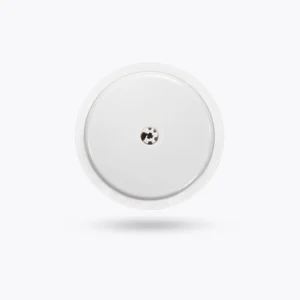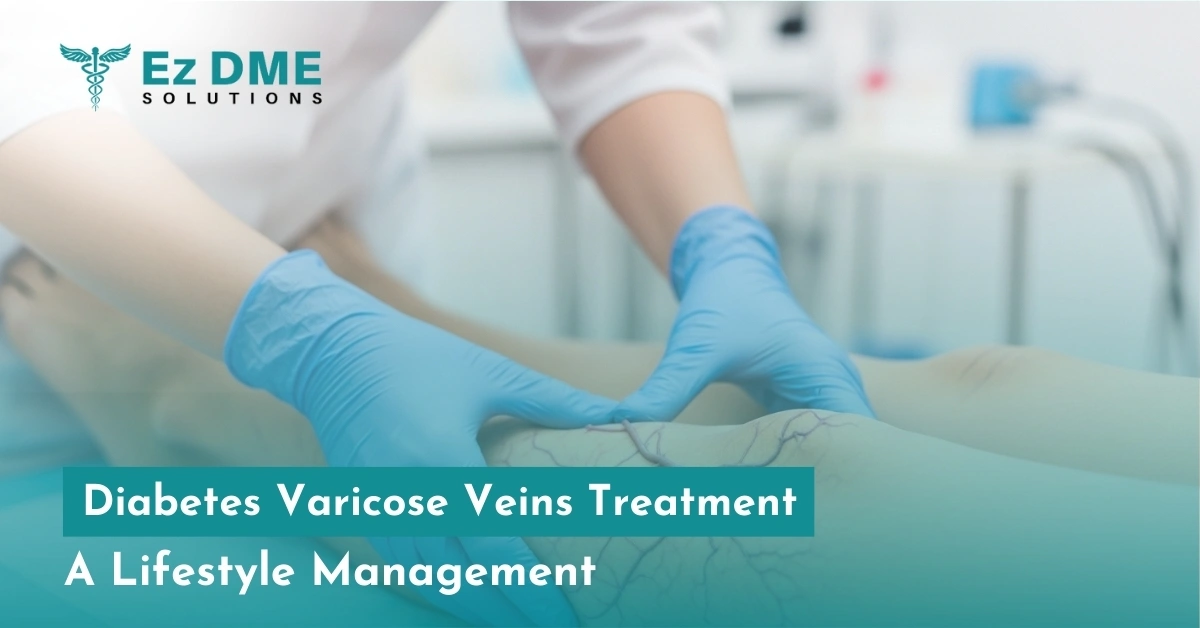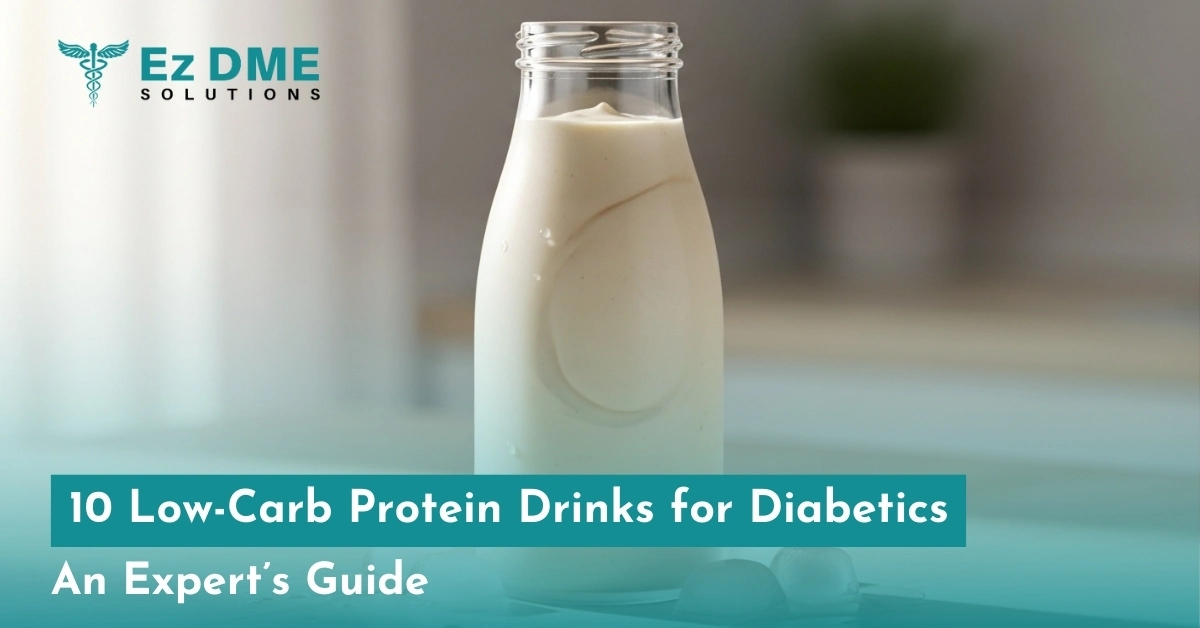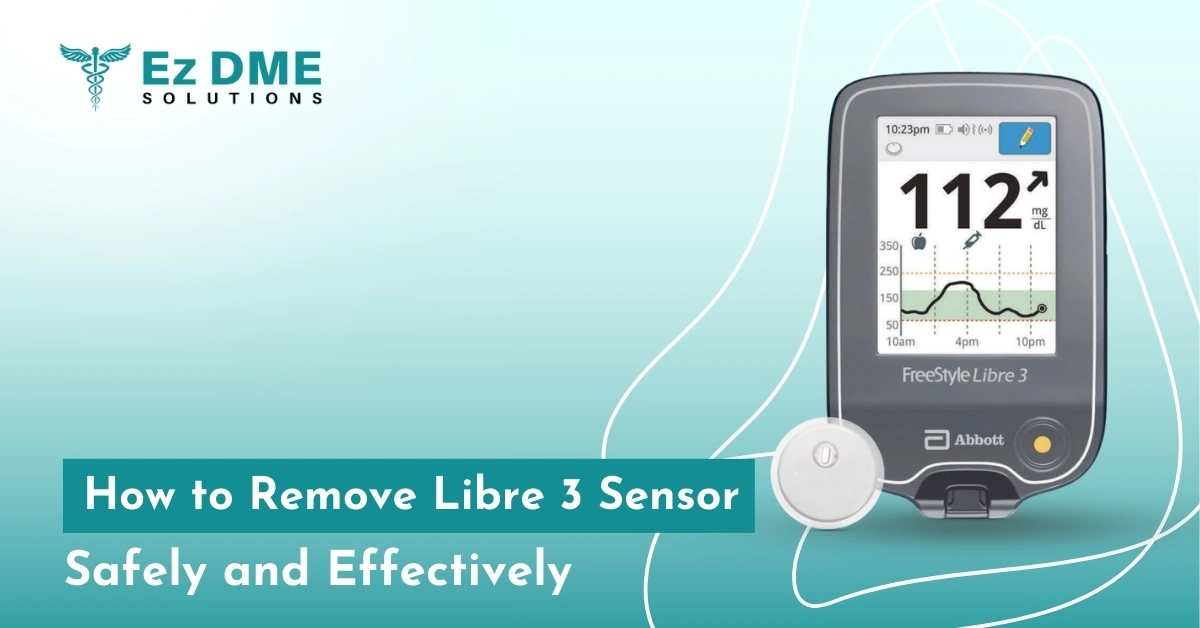Total:$110.00
Diabetes Varicose Veins Treatment: A Lifestyle Management
Varicose veins aren’t caused by diabetes, but it can cause them to get more severe by affecting blood vessels and slowing the flow of blood. If blood flow is limited, pressure builds up in the veins, particularly around the legs. People suffering from varicose venous disease, either diabetes or varicose veins, do not know how to manage them together.
Products like CGM sensors, the Freestyle Libre 3 Plus sensor, can help manage blood sugar fluctuations and worsening symptoms associated with both. However, devices alone can’t do much for managing diabetes and varicose veins. This article breaks down the latest diabetes varicose veins treatment options that work. Check out medical devices, daily routines, and choices that support better circulation without crashing blood sugar control.
How Diabetes Affects Blood Vessels and Vein Function
Diabetes puts extra strain on the vascular system, but it doesn’t cause varicose veins. Ongoing hyperglycemia is most responsible for vessel damage at multiple levels. Here’s how diabetes damages blood vessels and worsens existing vein issues.
What Happens Inside the Varicose Veins
Varicose veins develop when vein valves weaken and blood flows backwards, leading to pooling, stretching, and surface-level twisting. Common symptoms include:
- Heaviness or fatigue in the legs
- Swelling, especially at the end of the day
- Itching or burning around the affected veins
- Skin discolouration or ulcers near the ankles
Diabetes and Blood Vessel Damage
Hyperglycemia, or high blood sugar, triggers biochemical damage that causes poor circulation and affects both deep and superficial veins.
| Mechanism | Impact on Blood Vessels |
| AGE formation | Stiffens vessel walls; promotes plaque buildup |
| Oxidative stress | Damages the inner vessel lining (endothelium) |
| Inflammatory activation | Triggers vessel inflammation and clot risk |
| Reduced elasticity | Limits blood flow and oxygen delivery |
| Nerve damage | Mask early symptoms of poor circulation. |
These effects are the backbone of diabetic vascular disease, especially in the legs. The overlap comes with other vascular problems called Deep vein thrombosis. DVT is different from varicose veins, but it’s caused by severe diabetes and can be life-threatening. Here’s DVT vs Varicose Veins in Diabetics:
- Varicose veins affect surface-level veins. They’re visible but not life-threatening.
- Deep vein thrombosis (DVT) forms in deeper veins and can lead to pulmonary embolism.
Why It Matters
Diabetics face a greater risk of DVT, and if varicose veins are already present, that risk multiplies. Understanding how diabetic vascular disease develops is the first step toward preventing long-term complications. Next, we’ll break down risk factors that increase symptoms of diabetes and varicose veins.
Risk Factors in Diabetes That Worsen Vein Health
People who suffer from both diabetes and varicose veins are more susceptible to complications. They deal with skin ulcers, infections, and delayed healing. Nerve damage from diabetic vascular disease also masks early signs such as aching, redness, or cuts. Here are some risk factors you need to know:
Uncontrolled Blood Sugar & Vein Damage
Thick, sugary blood behaves like a sticky fluid in circulation, and increased glucose slows passage through smaller vessels in the legs and feet. This can cause:
- Blood pooling in stretched veins
- Plaque buildup or clots
- Increased swelling and pain
Managing and monitoring sugar levels is needed with wireless insulin pumps (ezdme link), or else your body will get stuck in the cycle (clogged veins slow the healing, and hyperglycemia tops it)
Infection Risk from Skin Injuries
High glucose levels feed bacteria near varicose veins, which reduces circulation and immunity. There could be hidden infections due to small cuts or scratches. Therefore, diabetic patients should:
- Inspect skin near veins daily
- Keep areas moisturised
- Use protective gear or orthopaedic braces during activities like yard work
Hydration and Vein Function
Visible veins don’t always signal dehydration, but poor hydration worsens dehydrated veins, raising DVT or varicose vein risks. Proper fluid intake supports circulation and lowers vascular stress. Here’s a quick hydrated vs dehydrated veins comparison:
| Hydration Level | Vein Response |
| Hydrated veins | Cleaner blood flow, less clot risk |
| Dehydrated veins | Thicker blood, restricted flow, swollen veins |
Diet, Sodium & Blood Pressure
Even a slight sodium excess makes veins work harder, and it’s worse for diabetics. They already deal with blood vessel damage from hyperglycemia, so added strain increases leg pressure, swelling, and discomfort. (Source: PubMed Central)
How Diabetes Influences the Treatment Options for Varicose Veins
First, always get an accurate diagnosis of varicose veins. Healthcare providers typically:
- Visually assess legs in an upright stance for signs of swelling, discolouration, or bulging veins.
- Conduct a Doppler ultrasound to check venous valves and rule out the presence of clots.
An accurate diagnosis can stop complications from progressing to severe stages. For patients searching terms like “can varicose veins disappear on their own”, the answer is not straightforward, especially for those with diabetes. Vein health doesn’t improve passively in this group. Thickened blood, damaged vessels, and poor circulation make spontaneous recovery less likely.
Instead, structured management focusing on blood sugar control, compression therapy, movement, and surgical options is required. Treatment plans mirror diabetes care itself, structured, long-term, and based on personalized assessments like A1C levels and cardiovascular risk.
Here’s what you’ll need to keep in mind:
Varicose Veins Medical Devices
The latest treatment for varicose veins ranges from surface-level compression to advanced medical devices and outpatient surgery. These interventions are safe for diabetics but require pre-approval based on current A1C and overall cardiovascular risk.
| Treatment Type | Description |
| Sclerotherapy | Injection of solution/foam collapses smaller veins. |
| Endovenous Laser Treatment | Heat from the laser seals the damaged vein |
| Radiofrequency Ablation | A catheter delivers energy to close large veins |
| Ambulatory Phlebectomy | Removal through small skin punctures, minimal scarring |
| Vein Ligation & Stripping | Physical removal after tying off the vein; used in resistant cases |
| Compression Stockings | Supportive gear that improves circulation |
| Pneumatic Compression Pumps | Used to manage swelling and encourage upward blood flow, like an 8-chamber arm and shoulder sleeve of the BioCompression. |
Post-Treatment Diabetes Support
Products from EZDME Solutions support post-procedure care:
- Continuous Glucose Monitoring (CGM): Devices like FreeStyle Libre 3 Plus and Dexcom G6 Sensor offer real-time monitoring, helping patients track glucose fluctuations caused by pain or inflammation.
- Insulin Pumps and Kits: Brands such as Tandem, Omnipod, and Medtronic provide precise insulin doses for recovery.
- Orthopaedic Braces (Hip, Knee, Shoulder, Waist): Post-surgical support to manage pain and reduce stress-related glucose crashes.
These tools prevent unexpected sugar fluctuations, which could otherwise delay healing or worsen inflammation.
Lifestyle Changes with Management
Do or don’t do these actions for both vein health and diabetes self-management.
- Forget about smoking: Nicotine harms blood vessels and slows healing, so not recommended for either disease.
- Hydration: See above to understand the difference between hydrated and dehydrated veins in diabetes. Poor hydration provides high glucose effects.
- Elevation and Compression: Raising legs or using compression stockings limits pooling.
Clothing
Compression devices work especially well for those managing both diabetic leg swelling and compression-related symptoms.
- Footwear: Wear flat shoes and avoid high heels.
- Clothing: Loose-fitting garments reduce vein pressure, and make sure to never wear clothes that are tight around the waist.
Method Massage
Massage only helps with varicose veins as a preventative treatment, not for a full cure. Gentle techniques like lymphatic drainage ease pressure and reduce swelling. Keep in mind to never apply firm pressure over affected veins, as if you’re diabetic, it can bruise and trigger clotting. Always consult a vascular provider before initiating any massage plan.
Diet
Fiber-rich, whole foods support both diabetes and vein health. We recommend limiting high-sodium meals and sugars in sauces or processed items. Here are the best foods for varicose veins and diabetes:
| Nutrient/Supplement | Benefit |
| Vitamin C | Supports collagen, strengthens veins |
| Vitamin E | Enhances circulation and prevents clotting |
| B Complex | Lowers homocysteine, improves flow |
| Vitamin K | May reduce visible spider veins |
| Flavonoids | Anti-inflammatory, improves venous tone |
| Horse Chestnut | Reduces swelling and vein diameter |
| Apple Cider Vinegar | Topical relief and skin-tightening effect |

Varicose Veins Treatments with Physical Exercise
Do not sit or stand for long hours, as that worsens the varicose veins condition. Forgetful? Just set reminders to stretch or walk every hour. Here’s why moving around is important:
- Does walking help varicose veins? Yes, it stimulates the calf muscle pump and circulation
- Light Cardio (e.g., Swimming): Improves blood flow without added joint pressure, and slowly running also helps
- Leg Raises: Reduces pooling by helping venous return
- Weight Loss: Lowers vein load and supports glucose balance
This comprehensive approach doesn’t promise that your varicose veins will go away, as results will occur without intervention. Combining all the above methods allows safer, more stable outcomes for patients managing both conditions
How to Manage Both Diabetes and Varicose Veins Simultaneously
Managing both blood sugar control and vascular issues is exhausting on physical and mental health. EZDME Solutions offers tools that simplify the process with medical devices. FreeStyle Libre 3 Plus and Dexcom CGM sensors help monitor fluctuations triggered by pain, inflammation, or post-surgical stress.
Insulin pump kits from Ezdme Solutions provide precision dosing throughout the day. Meanwhile, orthopaedic braces (knee, hip, waist, shoulder) provide support during recovery or daily activity. Reach out to see if your insurance covers any of these devices!
Summary
Treating varicose veins in diabetic patients includes both control management and monitoring on multiple fronts (diet, meds, physical activities, and more!). Options such as compression devices, outpatient ablation, vein removal, or orthopaedic support work best when recovery is tracked using CGMs and managed with ongoing support. EZDME Solutions closes that gap by offering devices that match both vein recovery and sugar regulation needs.






Leave a Reply